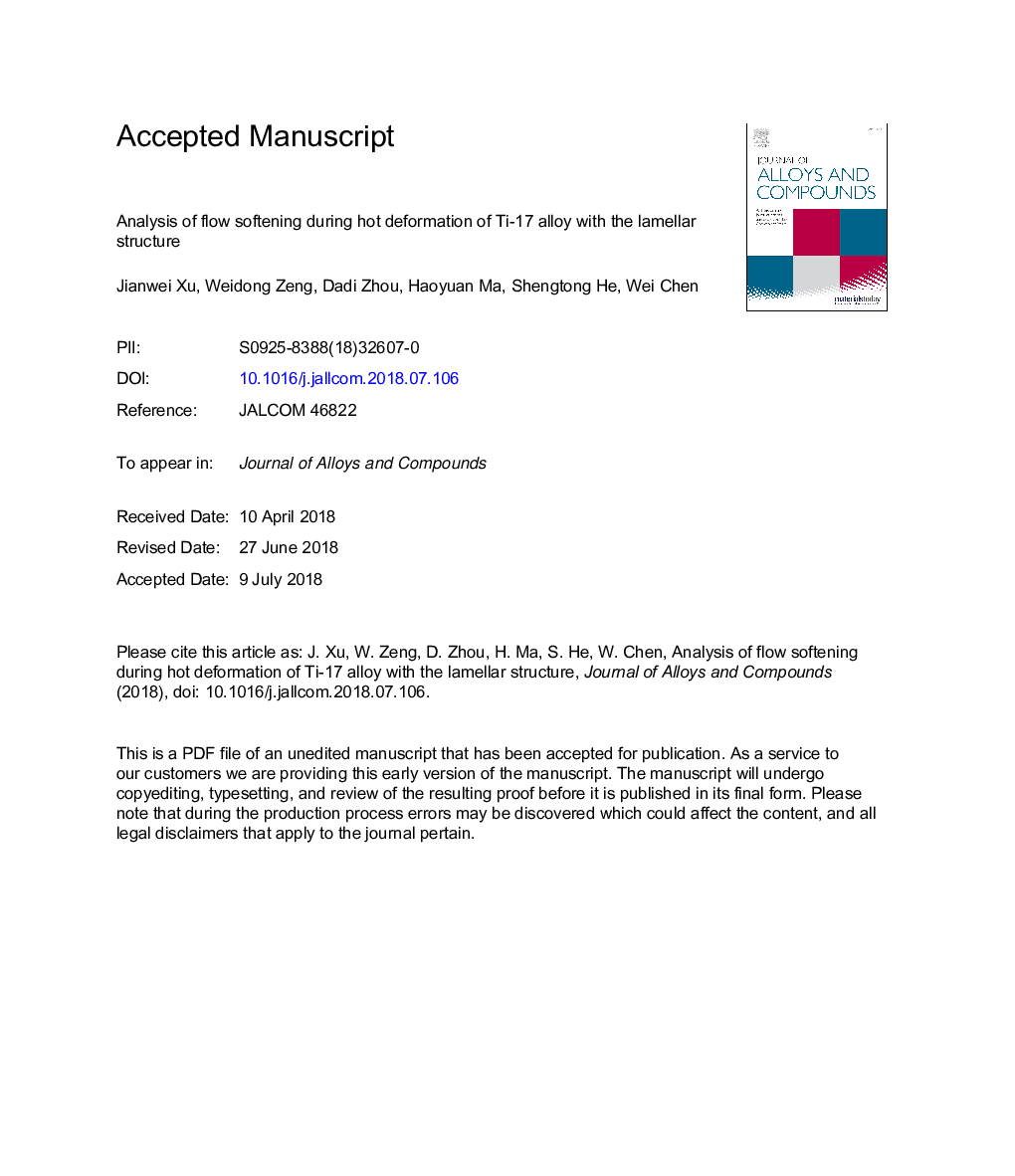| Article ID | Journal | Published Year | Pages | File Type |
|---|---|---|---|---|
| 7990239 | Journal of Alloys and Compounds | 2018 | 35 Pages |
Abstract
Flow softening of Ti-17 alloy with the lamellar structure during hot deformation is investigated in this work. For this purpose, hot compression tests are conducted with strain rate of 0.001-10â¯sâ1â¯at 780-860â¯Â°C. The experimental results are analyzed through theoretical calculation and microstructure observation (SEM, TEM and EBSD). Flow softening extent of Ti-17 alloy increases with the decreasing temperature and increasing strain rate. The softening behavior can be explained by the two aspects: deformation heating and microstructure changes. Deformation heating effect is caused by temperature rise, which is more serious at higher strain rate. Microstructure changes include the bending, kinking, rotation and separation of the lamellar alpha, which can be defined as the pan-globularization of alpha phase. In addition, the EBSD observations indicate that the continuous dynamic recrystallization occurs in beta phase. Microstructure changes of alpha and beta phases influence together flow softening behavior. Specifically, the pan-globularization of alpha phase and continuous dynamic recrystallization of beta phase result in flow softening of Ti-17 alloy.
Related Topics
Physical Sciences and Engineering
Materials Science
Metals and Alloys
Authors
Jianwei Xu, Weidong Zeng, Dadi Zhou, Haoyuan Ma, Shengtong He, Wei Chen,
